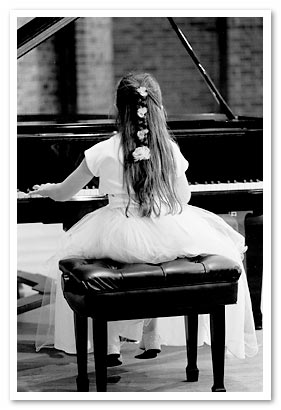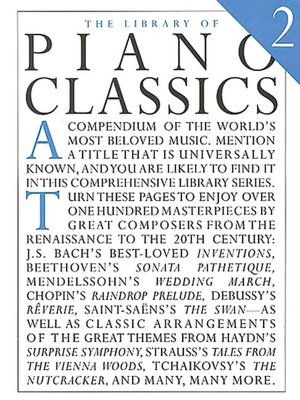The exquisite Tampa Oratorio Society is performing this choral work by Faure in March, so I decided to go listen. Quite amazing!
Thursday, November 29, 2012
Monday, November 12, 2012
Hymn Conceptions by Daniel Joiner
 By a friend from USF School of Music
By a friend from USF School of Music
"Hymn Conceptions" presents the timeless hymns of the Christian tradition in a
variety of new musical settings for solo piano, including Jazz, Blues,
Gospel, Irish, Bossa Nova, and Classical.
Genre: Spiritual: Instrumental Gospel
Monday, November 5, 2012
Wednesday, October 10, 2012
How and Where to Look for a Piano, Part 2
 I wanted to follow up my previous post with sharing this website:
I wanted to follow up my previous post with sharing this website:piano adoption.com
Thanks to Music Matters Blog for posting this!
Monday, October 1, 2012
Ran Across the Chinese Piano House
 |
| The Piano House in An Hui Province, China, is a showroom for city planners to show off their plans for the Shannan district in Huainan City. |
Yes, we musicians do enjoy seeing our instruments displayed in all sorts of ways... in paintings, logos, stationary, and here, architecture. Instruments endear themselves to their users, becoming beautiful tools. In general, that is true of all tools - computers, knitting needles, the pen, watering cans, and easels. All these become venerable subjects of art because the sight of our beloved tools makes us happy.
Friday, September 28, 2012
Thursday, September 20, 2012
Friday, September 7, 2012
Little Love *Notes*
My husband sent this to me, saying, "I think this about my favorite musician every day! ♥"
I love my biggest fan!
I love my biggest fan!
Saturday, September 1, 2012
The Prepared Piano!!
It was in the early 1900s that pianists started experimenting with drumming the lid, plucking and so on. As the experimentation moved up the academic ladder, the term "prepared piano" was applied to when items were inserted in the strings to alter the sound. This is basically what is done here, without insertions, just using lots of hands and loads of creativity! Fun stuff and great performing - basically the Piano Guys' hallmark.
I looked up prepared piano on wikipedia, and the article gave a number of early examples of ways piano makers added sounds to the piano. Here was my favorite:
I looked up prepared piano on wikipedia, and the article gave a number of early examples of ways piano makers added sounds to the piano. Here was my favorite:
Turkish stop
Around the turn of the nineteenth century, Turkish music was so popular that piano manufacturers made special pianos with a Turkish stop, also called the military or Janissary stop. The player would press a pedal that caused a bell to ring and/or a padded hammer to strike the soundboard in imitation of a bass drum. The Turkish stop was popular for playing the famous Mozart Rondo alla Turca, K 331.
Friday, August 24, 2012
How and Where to Look for a Piano, Part 1
[Note: I forgot this post and left it unpublished from almost a year ago, but the information is still great!]
Looking for a piano? These resources may help:
I came across this since I've been looking for a piano in hopes of keeping it at the Homeschool Resource Center in Brandon. My piano (an antique Henry F. Miller Grand) is wonderful, and I should tell the story of how I got it sometime. It was a word-of-mouth sale. The owner told piano teachers in her area she was selling.
Looking for a piano? These resources may help:
I came across this since I've been looking for a piano in hopes of keeping it at the Homeschool Resource Center in Brandon. My piano (an antique Henry F. Miller Grand) is wonderful, and I should tell the story of how I got it sometime. It was a word-of-mouth sale. The owner told piano teachers in her area she was selling.
The most important advice you need to know about buying used is: have a trusted piano technician check it out before buying. Factor this cost before buying.
Where to look for a piano:
Ask churches - many have pianos gathering dust in spare rooms.
Ask piano teachers.
Find used piano distributors, either in the phone book or through new piano distributors.
Ebay.com
CraigsList.org
Ask churches - many have pianos gathering dust in spare rooms.
Ask piano teachers.
Find used piano distributors, either in the phone book or through new piano distributors.
Monday, August 20, 2012
Peponi/ Coldplay
Thrilling intercultural music! I have posted from the Piano Guys and their band member Steven Sharp Nelson a few times. This might be my favorite piece by them.
Friday, August 10, 2012
Timeless Hymns with Ageless Classics, Book & CD
 When I met my dear friend Lauren, we were around fifteen years old. Our families were staying in the beautiful mountains of Colorado at a home school family camp. We had a grand time in the varied camp activities and exploring the land, and when we were at the lodge, people gathered around the piano and had fun making music. Some brought their own instruments. Lauren brought this book of medleys, and it has been a favorite of mine since. Actually, finding great hymn arrangements has been an ongoing challenge for me!
When I met my dear friend Lauren, we were around fifteen years old. Our families were staying in the beautiful mountains of Colorado at a home school family camp. We had a grand time in the varied camp activities and exploring the land, and when we were at the lodge, people gathered around the piano and had fun making music. Some brought their own instruments. Lauren brought this book of medleys, and it has been a favorite of mine since. Actually, finding great hymn arrangements has been an ongoing challenge for me!
By: Marilynn Ham
My favorite is still the one Lauren played in Colorado: Meditation from Thais with "My Jesus, I Love Thee." I performed it last month for my church's offertory. It is one of the hardest pieces I've performed in the last year.
It is so nice when books come with CD's. It gives you an interpretation of the music to consider, and you can pick which one is your favorite to start on without having to sight read them all.
Saturday, August 4, 2012
Scorio.com
 Last year, I posted my joyous discovery of Noteflight.com where I could use free software to write out simple music. I wanted to add here that Scorio.com is similar to Noteflight, though I only used it to find music.
Last year, I posted my joyous discovery of Noteflight.com where I could use free software to write out simple music. I wanted to add here that Scorio.com is similar to Noteflight, though I only used it to find music.So these two sites (and there may be others) give you the ability to
1) write music
and
2) search through what others write and make public, which includes some of my favorite pieces.
Tuesday, July 31, 2012
Friday, July 20, 2012
Robert Pace: Productive Practicing
 | |||
| Piano Pedagogue, Robert Pace (Read more) |
"Practicing is an art in itself, and too many students could use help in making practice time more productive.
"...in my experience when students learn to accomplish more during practice, they derive more satisfaction from music study and begin to allot more time to practicing.
"If good daily practice is essential to progress for studnetns, the same is no less true for teachers, who as professionals should continue to grow musically... practicing may be an end-of-the-day struggle with tired technique and resurrected repertoire. [Point taken]
"Howard Gardner theorizes that problem -solving skills are a basic component of intelligence. Few young students, though, can solve problems effectively in daily practice because the necessary disciplines - theory, ear-treaining, sight-reading, and keyboard harmony - are routinely postponed to the college level. [Thankfully, I was taught those things through the 3-hand method by Dave Clark, and teach them to my students!]
I was listening to Beethoven's 2nd Sonata as I wrote this, and realized that Pace looks like Barenboim!
Friday, July 13, 2012
After 20 Years, Why I'm Still Teaching - Dr. George Grant
 |
| Dr. George Grant |
1. I get to love what I love in front of my students.
2. I inevitably learn more--even more than those I’m teaching.
3. I have a great excuse to buy more books.
4. And then, I have a great excuse to read more books.
5. I am forced to make real-life connections rather than simply pontificate in the theoretical.
6. I am provoked to think about the future and scrutinize the present through the lens of the past.
7. I am able to reacquaint myself with the best of our great legacy of art, music, and ideas.
8. I get the satisfaction of seeing the “lights come on.”
9. I am constantly prodded to hone my communications skills.
10. I get to bear testimony to the grace and mercy of God, in space, in time, and in me.
11. I am privileged to catch early glimpses of the future leaders of our culture in action.
-Dr. George Grant, http://eleventary.blogspot.com/2011/05/after-20-years-why-im-still-teaching.html
2. I inevitably learn more--even more than those I’m teaching.
3. I have a great excuse to buy more books.
4. And then, I have a great excuse to read more books.
5. I am forced to make real-life connections rather than simply pontificate in the theoretical.
6. I am provoked to think about the future and scrutinize the present through the lens of the past.
7. I am able to reacquaint myself with the best of our great legacy of art, music, and ideas.
8. I get the satisfaction of seeing the “lights come on.”
9. I am constantly prodded to hone my communications skills.
10. I get to bear testimony to the grace and mercy of God, in space, in time, and in me.
11. I am privileged to catch early glimpses of the future leaders of our culture in action.
-Dr. George Grant, http://eleventary.blogspot.com/2011/05/after-20-years-why-im-still-teaching.html
Saturday, July 7, 2012
Making Copies with Word Processor, Camera and Printer, and without a Scanner
 Since I don't have a scanner:
Since I don't have a scanner:Photograph the page - find a spot that gives the brightest white( some cameras have document/painting settings) and include the page number
If your printer or programs can't print from some version of Photo Viewer:
Copy from some version of Photo Viewer onto a Word document.
Crop, rotate and resize to full page. Save.
Repeat for other photos on next pages in same document, or create new document.
Save.
Print.
Sunday, July 1, 2012
Bach's Fifth Gospel in Japan
I read this article by Chuck Colson in high school, and it further endeared Bach to me as my favorite composer and a hero of my faith. I had the privilege of meeting Mr. Colson, then my husband's boss, just before his passing this year.
Bach's 'Fifth Gospel':The Enduring Power of Artistic Excellence
Christianity has never had a very strong presence in Japan.
In fact, with industrialization, Japan has become one of the most
secular nations on earth. But right now, thousands of Japanese are
hearing the gospel of Jesus Christ in a new, or should I say old,
way—and they're embracing it.
The evangelist responsible for leading this spiritual awakening might surprise you. He's none other than Johann Sebastian Bach.
That's right. The German composer who died 250 years ago is bringing
Christianity to Japan through the beauty of his music. Now there are
reports of thousands of Japanese, inspired by his cantatas, converting
to Christianity. It's a testament to the power of art steeped in a
biblical worldview.
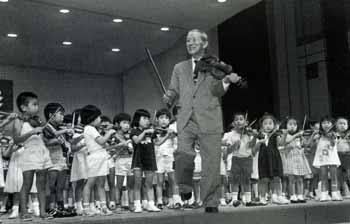 |
| Shinichi Suzuki |
Christianity has never been widely embraced by Japanese culture. When
European traders and missionaries came to the island nation in the 17th
century, they met with mixed success: Commerce thrived, but the Gospel
languished. But Japan eagerly embraced the music of Western culture.
Shinichi Suzuki even developed a method to learn to play classical
instruments that became famous worldwide. But now, through a resurgence
in Bach's popularity, that music is providing a foothold for evangelism
that trade and traditional approaches never have.
Bach's popularity is so great that the classes at the Felix Mendelssohn Academy in Bach's hometown of Leipzig, Germany, are filled
with Japanese students. These students are learning about more than the
music of the great composer—they learn about the spirit that moved him
to write: that is, Bach's love of God.
Writing on this resurgence of Bach's music for Civilization,
the magazine of the Library of Congress, Uwe Siemon-Netto reports that
his Japanese interpreter asked to start the day with one of Bach's
cantatas. She selected one whose lyrics declare that God's name is Love.
"This has taught me what these two words mean to Christians... and I
like it very much," she said.
 |
| Masaaki Suzuki |
As Siemon-Netto points out, Bach's music was once celebrated as the
"fifth gospel"—praise that has never been more aptly said of Bach's work
than it is in Japan today.
What began as an interest in the brilliance of the music has led to
an understanding of the richness of God's grace. Masaaki Suzuki, founder
of a school for Bach's music in Japan, [Bach Collegium Japan] says that, "Bach is teaching us
the Christian concept of hope." And Yoshikazu Tokuzen, of Japan's
National Christian Council, calls Bach nothing less than "a vehicle of
the Holy Spirit." And the revival his music is causing indeed confirms
that.
 |
| Bach Collegium Japan |
At the end of every one of his works, Bach inscribed the initials
"SDG"—shorthand for Soli Deo Gloria, "to God alone be the glory." Little
could he have imagined what purposes God would have for his work, even
hundreds of years after his death.
And Bach could hardly have imagined that his music would contribute to the evangelization of Japan.
Bach's legacy is a sterling illustration of C.S. Lewis' maxim that
the world does not need more Christian writers—it needs more good
writers, and composers, who are Christians. And when we produce art that
is really good, art that reflects a biblical worldview, its richness
will endure through the ages—Soli Deo Gloria.
By Chuck Colson|Published Date: June 19, 2000
 |
While I could not find an image of Bach's SDG signature from a manuscript, this is an image of a similar signature of Bach's contemporary, George Frederic Handel.
Friday, June 22, 2012
Recommended CD: My Cry Ascends - Newly Composed Hymns
I cannot recommend this CD enough - listen and enjoy!!
Sheet music and sample tracks here.
My Cry Ascends | Greg Wilbur from Compass Cinema on Vimeo.
Sheet music and sample tracks here.
My Cry Ascends | Greg Wilbur from Compass Cinema on Vimeo.
Monday, June 18, 2012
Scripture Lullabies
Sunday, June 10, 2012
Saturday, June 2, 2012
Music - Peacemaking in WWII
THIS is a beautiful example of how humanizing music can be amidst the savagery and confusion of war.
THIS is why we make music, love music, and pour our hearts into music.
THIS is why we make music, love music, and pour our hearts into music.
Thursday, May 31, 2012
Wednesday, May 23, 2012
Monday, May 21, 2012
Greater Pasco Youth Symphony Spring Recital
 This is a neat event! It would encourage any young musician to see others here.
This is a neat event! It would encourage any young musician to see others here. Saturday, May 19, 2012
Hooked on Classics
Something for everyone! A medley of the world's favorite classics. In the version he taught me years ago, Dave Clark altered the Beethoven 5th and added in the Rhapsody in Blue theme. We did it as an adaptation, using what was written note wise, and the chord symbols given. Always fun!
Wednesday, May 9, 2012
Piano Classics Volumes I and II - Intermediate pieces reference
I went through the two volumes of this wonderful and affordable Piano Classics collection, searching for intermediate and advanced pieces to teach.
Joplin Marche
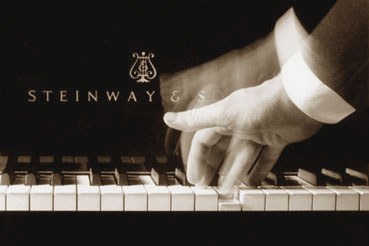
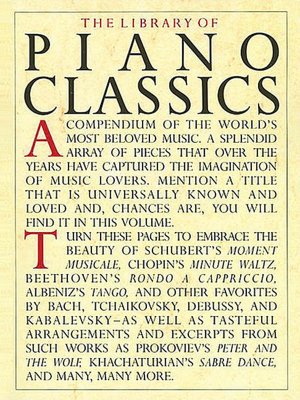
Volume 1
Albeniz Malaguena
Bach
Prelude No. 1 from the The Well-Tempered Clavier
Air from the Suite in D Major
Beethoven: Fur Elise
Moonlight Sonata mvt. 1
Rondo A Capriccio - Rage over op. 129
6 Variations from the opera La Molinara
Hungarian Dance No. 5 - Brahms
Chopin:
Valse Op 64 No. 2
Nocturne Op. 72 no. 1
Nocturne in E Flat Op 9 No. 2
Prelude OP. 28 No. 6
Valse Op. 64 No. 1
Le Coucou Daquin
Nocturne Field in Bb
Rondino in C Diabelli
Poem in Bb Fibich d. 1900
Anitra’s Dance pg 1 Grieg
Gavotte in D F. Gossec Classical Era
A` Alfredo G. Faria Playera Granados
Air And Variations Handel in E
The Harmonious Black smith from Suite No. 5
Haydn Sonata in D Major
The Music Box O. 32 liadov
To a Wild Rose MacDowell
Alla Turca?
Sonata K 545 Mozart in C
Fantasy in D minor k 397
Barcarolle from the Tales of Hoffman J. Offenbach
Peter and The wolf Prokofieff
La Tambourin Rameau
Song of India
Italian Song Op 39 No. 15 Tchaikovsky
Serenade DUET Schubert
Moment Musical op 94 No 3 Schubert
Soldier’s March Schumann & :
The Happy Farmer from Album of the Young
Traumeri
(DUET)
The Beautiful Blue Danube
Vol 2
Prelude No. 2 from 12 Little Preludes
2 pt Invention No. 8
2 pt Invention No. 4
Sonatina No. 1 in G Major
Sonatina No. 2 in F Major
Prelude in E m Chopin op 28 No. 4
Raindrop Prelude
Prelude in C minor
Polonaise Militaire Op.40 No.1
Largo New World Symphony Dvorak
The Dying Poet Gottschalk Meditation
Passacaille Handel in Gm
Sarabande Handel
Surprise Symphony Andante Haydn.
An Alexis Hummel
Flower Song (pre-Lieb) Op. 39 Lange
Merry Widow waltz Lehar
Confidence
Op 19 no. 4 Consolation Mendelssohn
Venetian Boat Song No. 2 Op 30, No. 6
12 Variations 265k Ah! Vous dirai-je , maman
Minuet from Don Juan Mozart
Sonata in A k. 331 Mozart
Dance of the Hours from La Giaconda Amilcare Ponchielli
Minuet in A Minor Purcell
The Young Prince and Young Princess Korsakov
Melody in F Op. 3, No. 1 Anton
Romance OP. 44, No. 1 Rubinstein
Trois Gymnope’dies erik Satie
Pastoral Scarlatti in G
Knight Rupert Album for the Young Schuman
Advanced (Level 5- 8 )
Clair de LuneFinlandia Sibelius
Dance of the Sugar Plum Fairy,
Waltz of the Flowers &
“June” Barcarolle - Tchaikovsky
The Skater’s Waltz - Waldteufel
And many more which I haven't listed.


Tuesday, May 1, 2012
Favorite Virtuosic Piano Literature
My top favorite virtuosic pieces that I have learned or want to learn:
Bach 's Gigue in G major (French Suite No 5)
Liszt's Hungarian Rhapsody #2
Gershwin's Rhapsody in Blue
John Novacek's Full Stride Ahead
Joplin's Maple Leaf Rag
Transcription of Handel's Arrival of the Queen of Sheba
Chopin's 'Minute' Waltz in Db
Lecuona's Malaguena
Khorsakav's Flight of the Bumblebee
Whitewater Chopsticks, by Calvin Jones
Aquarium from The Carnival of the Animals - Camille Saint-Saëns
(others I am forgetting, of course)
and this :
Beethoven "Moonlight" Sonata op 27 # 2 Mov 3
Bach 's Gigue in G major (French Suite No 5)
Liszt's Hungarian Rhapsody #2
Gershwin's Rhapsody in Blue
John Novacek's Full Stride Ahead
Joplin's Maple Leaf Rag
Transcription of Handel's Arrival of the Queen of Sheba
Chopin's 'Minute' Waltz in Db
Lecuona's Malaguena
Khorsakav's Flight of the Bumblebee
Whitewater Chopsticks, by Calvin Jones
Aquarium from The Carnival of the Animals - Camille Saint-Saëns
(others I am forgetting, of course)
and this :
Beethoven "Moonlight" Sonata op 27 # 2 Mov 3
Wednesday, April 25, 2012
Events: Week of Apr. 29 - May 5
Florida Orchestra: Pops in the Park
Thu, May 3, 2012 at 7:30 PM
Curtis Hixon Park, Tampa FREE!!!
Curtis Hixon Park, Tampa FREE!!!
Saturday, April 21, 2012
Fun Piano Duets
Duets are fun and a great way to learn to play with others, a skill that can often be lost to pianists. Of course, any piece can be made into a duet - divide here, add a little there. I would love to do a recital with Whitewater Chopsticks made into a duet. Here is one arrangement. Although I would probably arrange it for four hands instead of two pianos.
Two years of "Piano Ensemble" in college consisted almost entirely of playing with the other pianists in duets and trios. Here are a few of the pieces I learned and watched in class.
Brahm's Hungarian Dance no. 5
Buy at: http://www.virtualsheetmusic.com/score/Hungarian1H.html
Free copy - The first ever published version - more difficult:
http://conquest.imslp.info/files/imglnks/usimg/9/92/IMSLP205870-PMLP16016-Brahms_-_Hungarian_Dances__14___2P_ed.Simrock_.pdf
The Bercuese from Faure's Dolly Suite is a charming beginning duet for intermediate players, and is also available on Virtual Sheet Music. IMSLP or other printable classical score providers might have it for free.
Here is the Bercuese:
Also, listen to the world's most famous duet playing pianists, the Lebeque Sisters:
And for some real inspiration, listen to the Five Browns.
Two years of "Piano Ensemble" in college consisted almost entirely of playing with the other pianists in duets and trios. Here are a few of the pieces I learned and watched in class.
Brahm's Hungarian Dance no. 5
Buy at: http://www.virtualsheetmusic.com/score/Hungarian1H.html
Free copy - The first ever published version - more difficult:
http://conquest.imslp.info/files/imglnks/usimg/9/92/IMSLP205870-PMLP16016-Brahms_-_Hungarian_Dances__14___2P_ed.Simrock_.pdf
The Bercuese from Faure's Dolly Suite is a charming beginning duet for intermediate players, and is also available on Virtual Sheet Music. IMSLP or other printable classical score providers might have it for free.
Here is the Bercuese:
Also, listen to the world's most famous duet playing pianists, the Lebeque Sisters:
And for some real inspiration, listen to the Five Browns.
Arrival of the Queen of Sheba
This past Sunday, I played one of my favorite pieces, Arrival of the Queen of Sheba,
by Handel, transcription for piano solo, as postlude for Sunday worship. I wanted to do it on organ, a much neglected instrument these days, as fewer and fewer learn to play it. It has well been named the Queen of the instruments, only topped by the voice. This piece lends itself well to organ, though the score was not written for it. I am not trained in organ, but, as G. K. Chesterton said, "if something is worth doing, it's worth doing badly" (rather than not at all!) It went off alright, and there were some very happy listeners who thanked me afterward. Here is the score. It is truly one of the most pristine pieces ever written.
Friday, April 20, 2012
Theme from the film Amelie
I was practicing in the rooms at the USF School of Music one evening when I heard this. I asked the girl playing it what it was, and found the sheet music on scribd and noteflight (also adding it to my youtube playlist).
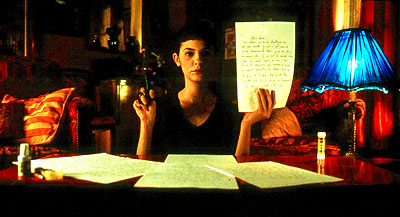 I find a lot of sheet music on Noteflight. It requires registration to search it for music people have written/transcribed/arranged, but it's no hassle. So register and search if you like, but for ease, here is the sheet music, courtesy of http://m-piano.blogspot.com.
I find a lot of sheet music on Noteflight. It requires registration to search it for music people have written/transcribed/arranged, but it's no hassle. So register and search if you like, but for ease, here is the sheet music, courtesy of http://m-piano.blogspot.com. Friday, April 13, 2012
Events: Week of Apr. 22- 28
Monday, Apr. 23, Choral Concerts, Concert,Southeastern College at First Presbyterian of Lakeland(Presbyterian Series), 7:30 p.m.
Sunday, Apr. 22, 2012, 2 – 4 p.mThe Music of Olivier Messiaen
-The works of the giant of 20th century composition include the masterpiece, Quartet for the End of Time, songs, the motet O Sacrum convivium and organ works performed by faculty artists.
 |
Messiaen
|
Friday, Apr. 27, 7:30 pm
USF SYCOM
Concert Hall, USF
Free
Monday, April 2, 2012
One of the best inspirational videos ever - Susan Boyle - Britains Got Talent 2009
Yes, I was inspired. http://www.youtube.com/watch?v=VSrAJsWvEIc&feature=related
And here' the Korean version :)
 |
| http://www.youtube.com/watch?NR=1&v=tZ46Ot4_lLo&feature=endscreen |
Thursday, March 29, 2012
The Cellist and Hymnody
He infuses this hymn with his signature playing style, with multiple layers of himself playing, driving motion with percussive strokes and pizzicato, and Celtic or Classical embellishment.
When I teach hymns to my students, I tell them they can do the same, infuse it with their energy, as composers have done of old. Bach's setting of Luther's A Mighty Fortress is our God is one example. You can hear more of Nelson and the Piano Guys on YouTube or Grooveshark.
When I teach hymns to my students, I tell them they can do the same, infuse it with their energy, as composers have done of old. Bach's setting of Luther's A Mighty Fortress is our God is one example. You can hear more of Nelson and the Piano Guys on YouTube or Grooveshark.
Saturday, March 24, 2012
How many other things are we missing?
This is so awesome. Please take a moment to read:
A man sat at a metro station in Washington DC and started to play the violin; it was a cold January morning. He played six Bach pieces for about 45 minutes. During that time, since it was rush hour, it was calculated that 1,100 people went through the station, most of them on their way to work.
Three minutes went by, and a middle aged man noticed there was musician playing. He slowed his pace, and stopped for a few seconds, and then hurried up to meet his schedule.
A minute later, the violinist received his first dollar tip: a woman threw the money in the till and without stopping, and continued to walk.
A few minutes later, someone leaned against the wall to listen to him, but the man looked at his watch and started to walk again. Clearly he was late for work.
The one who paid the most attention was a 3 year old boy. His mother tagged him along, hurried, but the kid stopped to look at the violinist. Finally, the mother pushed hard, and the child continued to walk, turning his head all the time. This action was repeated by several other children. All the parents, without exception, forced them to move on.
In the 45 minutes the musician played, only 6 people stopped and stayed for a while. About 20 gave him money, but continued to walk their normal pace. He collected $32. When he finished playing and silence took over, no one noticed it. No one applauded, nor was there any recognition.
No one knew this, but the violinist was Joshua Bell, one of the most talented musicians in the world. He had just played one of the most intricate pieces ever written, on a violin worth $3.5 million dollars.
Two days before his playing in the subway, Joshua Bell sold out at a theater in Boston where the seats averaged $100.
This is a real story. Joshua Bell playing incognito in the metro station was organized by the Washington Post as part of a social experiment about perception, taste, and priorities of people. The outlines were: in a commonplace environment at an inappropriate hour: Do we perceive beauty? Do we stop to appreciate it? Do we recognize the talent in an unexpected context?
One of the possible conclusions from this experience could be:
If we do not have a moment to stop and listen to one of the best musicians in the world playing the best music ever written, how many other things are we missing?
Wednesday, March 21, 2012
A little Medtner
In honor of my good friend, fellow USF student, and extraordinary pianist, Jeff Chodill, I wanted to post my favorite number from his graduate concert in Spring 2011 at USF, consisting entirely of Nikolay Medtner.
Monday, March 19, 2012
Events: Week of Mar. 25- 31
Mar. 30 ,Orchestra Concert, Bush Chapel, Southeastern College 7:30 p.m. FREE
Just want to put this one out because Brian Moorhead is one of my favorite professors and clarinetists in the world -
Friday, Mar. 30, 6:00 pm
Resident Artist Series:
Calvin Falwell and Brian Moorhead
Barness Recital Hall, USF
Advance Tickets: $8/$12
Just want to put this one out because Brian Moorhead is one of my favorite professors and clarinetists in the world -
Friday, Mar. 30, 6:00 pm
Resident Artist Series:
Calvin Falwell and Brian Moorhead
Barness Recital Hall, USF
Advance Tickets: $8/$12
Saturday, March 17, 2012
The Five Browns
After attending their concert in 2008 at Florida Southern College, I was a committed fan. At the tiem, that meant that I borrowed their CD from library. Now I post on my blog and add them to my youtube playlist. ;)
Malaguena Awesomeness on Vimeo.
Saturday, March 10, 2012
Events: Week of Mar. 18 - 24
| Monday, Mar. 19 Kozmik String Quartet, Concert,Southeastern College at First Presbyterian of Lakeland (Presbyterian Series), 7:30 p.m. Thursday, Mar. 22, 7:30 pm USF Chamber Winds: Birdsong and other Nice Tunes Barness Recital Hall, USF Free
Free!!! Artistry of the Piano: The South African-born pianist with credits in major venues throughout the world has been called "formidable...dizzying...magical" by the press. |
 |
| Petronel Malan, piano |
Christ our Redeemer Lutheran Church
304 Druid Hills Drive, Temple Terrace FL
7:00 pm to 8:30 pm
Ticket prices: 6 - $15.00 per person at door. More info - please call Tom Henderson at 813-988-4277
Monday, March 5, 2012
Beethoven and Shultz
Visit http://absadmin.users.sonic.net/schulz/pages/page1.html for some fun!
 When I went to visit Lauren, a dear friend and fellow piano teacher in San Jose, she took me to the MLK library Ira F. Brilliant Beethoven Center that hosts a Beethoven museum - at that time, it was replete with Peanuts comic strips!! Charles Shultz's love of Beethoven is unmistakable. This fascinating union of Beethoven and Peanuts was totally new for me, and we had a grand time!
When I went to visit Lauren, a dear friend and fellow piano teacher in San Jose, she took me to the MLK library Ira F. Brilliant Beethoven Center that hosts a Beethoven museum - at that time, it was replete with Peanuts comic strips!! Charles Shultz's love of Beethoven is unmistakable. This fascinating union of Beethoven and Peanuts was totally new for me, and we had a grand time!
Subscribe to:
Posts (Atom)















